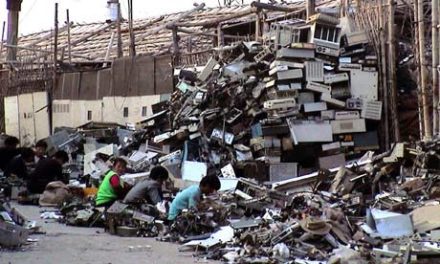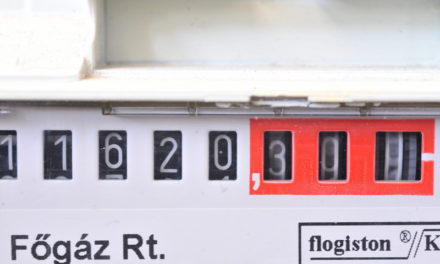The experience of recent years shows that cars cause problems for Budapest drivers in two cases: when they are moving and when they are standing still. We asked lawyer Dr. Kázmér Kovács, chairman of the Legal Committee of the Hungarian Auto Club, about the causes and consequences of the city administration's "car chase", about the risks of the appearance of electric scooters, and how the Capital City ignores the expertise of the more than a hundred-year-old Auto Club.
The transport concept should be about operating a complex system as smoothly as possible, taking into account the needs and realities of all actors, instead, in recent years, it seems that even the implementation of good-sounding ideas in Budapest has only caused chaos. Why did this happen?
You have to ask the mayor about this, in any case, I can only call it regrettable that, in fact, without taking into account the realities and conditions of Budapest, they are preparing and implementing steps that fundamentally make traffic in Budapest impossible, based on some pre-determined wrong concept.
The mayor recently wrote on social media, after the fatal stampede on the boulevard, that - among other measures - the number of 30 zones will be doubled. Could this reduce the number of fatal accidents?
First, let's choose the different things separately. In principle and in practice, it is undoubtedly true that the speed with which a hit occurs does not increase linearly, but exponentially, the severity of the injury to the person hit. But don't mix apples and pears. The accident caused by the aforementioned Italian motorist cannot be related to speeding, nor to passing through a red light or a railway crossing, but to the fact that the person was not in a condition suitable for driving at the time of the accident, and therefore drove drunk – at least according to the press reports – into a pedestrian zone where he hit someone.
So, on the part of the mayor, it is more than questionable to relate all of this to speeding. Let's say it: it was not justified.It seems quite telling that in this case we can talk about a subsequent confirmation of a concept that was aired in the press a year and a half earlier. At that time, a proposal appeared, which was not discussed in the classic form due to Covid, but could have been made directly by the mayor, and following it, a decision appeared, which put into perspective that the speed limit on side roads in Budapest would be uniformly 30 km/h, and 50 km/h and speeds above km/h are eliminated.
We already emphasized how unacceptable this procedure according to the lawn mowing principle is, later I will add that it can be compared to marking the bicycle lane with yellow paint on the Nagykörút.So it does not mean remedying or solving a situation assessed in advance by impact studies, but rather a uniform response without sufficient individualization that cannot be described other than as one of the elements of action against Budapest motorists. And it fits into the line: the idea of permanently closing the Lánchíd, the idea of demolishing the western square overpass, and previous ideas about the lower wharf in Pest are also such elements.
This can also be approached in the opposite way: if the speed limit is reduced in unjustified places, it can also be dangerous on the one hand, and on the other hand, puffing cars may not necessarily provide a healthier environment for the people who live there.
It's not that it's not certain, it's that it's not. After all, if the device emitting harmful substances stays in the public space for a longer period of time, it means that it emits more harmful substances. We have already stated this simple formula many times, referring to specific data: for example, the closure of one of the bridges, the Chain Bridge, from passenger car traffic means 30,000 kilometers of extra road use by cars in Budapest every day. This was met with disbelief by many, but there were clear surveys about this previously, which the Capital City does not dispute. And the reference that the traffic jams at the Tunnel will disappear if it is not possible to drive up to the Chain Bridge with cars may be correct in itself, but the same traffic jams, and even more, will develop a little further away instead.
Unfortunately, the capital's management does not want to acknowledge that it is not realistic to expect that, if they put people traveling by car in a more difficult situation, it will radically reduce the use of cars.
Because there are people who can't stop driving - because of their occupation or age or illness, or they come from the agglomeration, or they take a child to school, an elderly person to the doctor, or transport several people. There are countless cases. And of course there are also wealthy people for whom comfort is more important than anything else, so they will choose the more comfortable solution even in the event that you have to avoid the Chain Bridge and you can only drive slowly on the Nagykörút, because they don't want to walk the few hundred meters to do.
Acknowledging that there can be and will be those who give up the use of cars as a result of the capital's efforts to displace them, the overwhelming majority are not them, but ordinary people, who simply cannot do without the car; and it makes their lives miserable if they cannot live their daily lives as they would like and could in a city.Does this only affect motorists, or does it indirectly affect the lives of those who do not drive?
It clearly affects all Budapest residents, regardless of whether they have a car or not. Just an example:
the industrialists will charge and pass on to the customers the additional costs that they also incur as a result of the disproportionately difficult access routes.
What is your opinion on the Air Working Group's proposal that parking fees should be extended to the entire area of Budapest?
The situation is that the Constitutional Court has already dealt with the issue of collecting parking fees and made it clear that this right belongs to local governments, but it belongs to them because it is a possible and realistic means of traffic regulation. Local governments are responsible for the order of public roads with regard to municipal roads. That's why they need to get a tool. But for what? So that the traffic regulation of the roads can be implemented on their part, because this is their task arising from the law.
However, if the procedure for paying parking fees is extended to a place or increased to such an extent that it goes beyond the above purpose or responsibilities, i.e. it is clearly about collecting money, then this goes beyond what the Constitutional Court considered legal in its previous decision.
What about the regulation of electric scooters?
The issue of so-called micromobility devices is very problematic. The problem is that it is difficult to make a decision that will satisfy the goat and preserve the cabbage. If we let them drive on the road, they obstruct traffic, if on the sidewalk, they endanger pedestrians. The solution would be to restrict them to bicycle paths: bicycle paths should be established in places where they do not exist, even by removing a part of the sidewalk, and the movement of these devices should be made possible there. According to KRESZ rules, cyclists can currently travel at a maximum of 10 km/h, but these devices travel much faster on the pavement, and moreover, they are not driven by humans, but by machines.
By the way, we are waiting for the European Union regulations in this regard, but the infrastructural conditions in the different cities are very different, so the substantive solution options are also very different. This is a difficult matter, and its difficulty mainly stems from the fact that when the cities were formed, or when the infrastructure of the capital was created, these tools did not exist yet. In the current transitional situation, the solution would be mutual insight, that those who use these devices, depending on the place of use, also take into account the aspects of all other road users. On the other hand, KRESZ education should be emphasized more widely than before in schools.
As an interest protection organization, what can the Car Club do against the chaos, how can they cooperate with the Capital?
By constantly making our proposals, which either have a concept or not. The problem is that the more than a hundred-year-old Automobile Club, whose membership is tens of thousands of people and has a serious apparatus of experts, is placed in the same row as the 10-member associations that were established a year and a half ago. There are 18 of them, but we are ourselves, together with one or two other professional organizations similarly interested in transport.
And they refer to these negotiations as if organizations of equal rank and weight group had expressed their opinions, even though those 18 organizations together only have a fraction of the number of members of the Magyar Autoklub. But their voice is seen as the voice of the majority. This is the problem.Featured image source: Lawyer Forum












